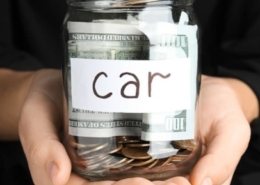The True Price of Owning a Luxury Vehicle
Owning a luxury car looks great, but the real costs go far beyond the sticker price.
What Owning a Luxury Vehicle Will Cost You
Owning a luxury car might seem like living the dream—sleek leather seats, cutting-edge technology, and a smooth, powerful ride that turns heads at every corner.
You’re not just buying a vehicle; you’re buying prestige, status, and a top-of-the-line driving experience. But there’s more to the story than meets the eye.
Key Takeaways
- Understand the Purchase Price: Luxury cars come with a higher upfront cost.
- Prepare for Insurance Costs: Expect significantly higher premiums for luxury vehicles.
- Budget for Maintenance: Luxury cars require costly, specialized upkeep.
Behind those high-end brand names and shiny designs lies a substantial financial commitment that many buyers overlook. Beyond the sticker price, luxury vehicles have long-term costs that add up quickly.
From insurance and maintenance to depreciation and premium fuel, owning a luxury car involves much more than just the initial purchase. Spoiler alert: it’s a lot more expensive than it seems.
Car Buying Tip: Looking for a luxury car? Prices can be steep, with many buyers paying above retail. But don’t worry—you can still score a great deal by requesting a free dealer price quote to compare dealer offers in your area.
The Sticker Shock: Purchase Price
When you see that shiny luxury car in the showroom, it’s easy to fall in love; what you might not expect is the price. Depending on the brand and model, a luxury vehicle can cost anywhere from $50,000 to over $200,000.
This is not your average Honda or Toyota—you’re paying for prestige, advanced technology, and superior engineering. While that might sound like a fair trade, remember this: the purchase price is just the beginning.
Financing and Leasing: Paying It Off
You’ll need to think about financing if you’re not paying for the car upfront in cash (and most people aren’t). Luxury vehicles often require larger down payments, higher interest rates, and heftier monthly payments than standard cars. Leasing is another option that may seem appealing, offering lower monthly payments, but beware—there are mileage limits and dealer fees that can add up quickly.
- How to Buy a New Car Below Factory Invoice Price – True dealer cost and the factory invoice price are not the same… dealer cost can be much lower.
- Figure a Fair Profit New Car Offer – How to calculate a fair profit new car offer.
- How to Buy a New Car Online – Not sure where to start? Use my step-by-step guide on how to buy a new car online.
Insurance Costs: Brace Yourself
Here’s the thing about luxury cars—they’re not cheap to insure. Insurance companies charge higher premiums since luxury vehicles often have more expensive parts, advanced technology, and higher replacement values.
Depreciation: Luxury’s Dirty Secret
One of the most painful aspects of owning a luxury car is depreciation. While all cars lose value over time, luxury vehicles depreciate faster. That $80,000 car you bought could be worth less than half in five years. The reasons for this are simple: luxury cars are often updated with the latest tech, and once a newer model is available, the older ones don’t hold their value as well.
The Depreciation Trap
Luxury cars lose value the moment you drive them off the lot. Some brands, like BMW or Mercedes-Benz, can lose as much as 30% of their value in the first year alone. Keep this in mind if you plan to sell or trade your vehicle down the road.
Maintenance and Repairs: A Costly Affair
Luxury cars cost more to buy and more to maintain. Regular maintenance is crucial for these high-performance vehicles, and skipping scheduled services can lead to expensive repairs down the road.
Routine Maintenance Costs
- Oil Changes: A typical oil change for a luxury car can run between $150 and $300, far more than a standard vehicle.
- Tires: High-performance tires for luxury cars are not cheap. A complete set could cost $1,000 or more.
- Brakes: Depending on your make and model, expect to pay upwards of $1,500 for a brake job.
And don’t even think about skipping routine check-ups. Luxury vehicles often have complex systems that require specialized technicians, who are expensive.
Fuel Costs: Premium Gas, Premium Price
Most luxury cars require premium fuel, so you’ll spend more at the pump. While it might not sound like a big deal, the price difference between regular and premium gas increases over time, especially if you’re a frequent driver.
If you’re used to filling up with regular gas, be prepared for a 20–30% hike in fuel expenses.
The Luxury Experience: Is It Worth It?
Despite all the costs, there’s no denying the appeal of a luxury vehicle. From smooth handling and acceleration to advanced technology, these cars offer an unparalleled driving experience. The leather interiors, high-end sound systems, and safety features are top-notch, making every ride feel special.
Benefits of Luxury Car Ownership
- Comfort: Luxury cars are designed with comfort in mind, offering plush seating and a quieter ride.
- Technology: These vehicles have cutting-edge features, from adaptive cruise control to state-of-the-art infotainment systems.
- Safety: Advanced features like collision detection and lane-keeping assist are often standard in luxury vehicles.
For many, the prestige and performance of a luxury vehicle outweigh the financial burden. But it’s essential to go in with eyes wide open and fully understand the costs involved.
Frequently Asked Questions
What is the biggest cost associated with owning a luxury car?
While the purchase price is high, ongoing maintenance, insurance, and depreciation can significantly increase.
Do luxury cars really depreciate faster than non-luxury vehicles?
Luxury cars tend to lose value faster, especially in the first few years of ownership.
How much more expensive is it to insure a luxury car?
Due to higher repair costs and vehicle value, luxury car insurance can be up to 50% more expensive than insuring a non-luxury vehicle.
Do all luxury cars require premium gas?
Most luxury cars are designed to run on premium fuel, which can lead to higher fuel costs over time.
Is it worth leasing a luxury car?
Leasing offers lower monthly payments, but you may face mileage limits and other fees. It’s worth considering if you don’t plan to keep the car long-term.
How much should I budget for maintenance on a luxury vehicle?
Depending on the model and brand, routine maintenance costs between $1,000 and $3,000 annually.
Conclusion: What’s the Real Price?
Owning a luxury vehicle is more than just a symbol of status—it’s a significant financial commitment. Beyond the high purchase price, you’ll face increased insurance premiums, costly maintenance, and rapid depreciation. These cars are undeniably more expensive to own than standard vehicles.
However, for those who can afford it, the benefits—prestige, superior comfort, and advanced technology—can justify the extra costs. Luxury vehicles offer a driving experience that’s hard to match, but it’s essential to weigh these perks against the ongoing financial responsibilities before making a decision.
















